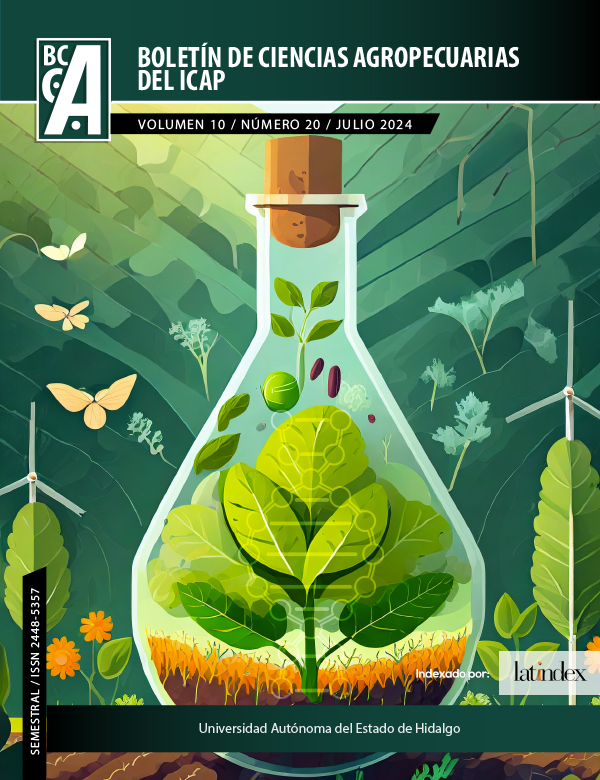The Xochimilco axolotl (Ambystoma mexicanum): An anatomical and scientific approach to its conservation
Abstract
Biodiversity conservation is one of the most serious concerns of our time. In this context, it is essential to pay attention to species that often go unnoticed, but play a crucial role in preserving ecological balance. One of those species that deserves special attention is Ambystoma mexicanum, commonly known as the axolotl. This surprising amphibian endemic to Mexico, with its unique regenerative capacity and its importance for scientific research, has become a true aquatic treasure in danger. This article aims to provide a brief description of some of the most impressive characteristics of Ambystoma mexicanum, focusing on its distinctive morphological characteristics, the phenomenon of neoteny as well as its remarkable capacity for regeneration. This is in order to motivate the conservation of this species and its habitat.
Downloads
References
SEMARNAT (2018). Programa de Acción para la Conservación de las Especies Ambystoma spp, Recuperado de: https://www.gob.mx/cms/uploads/attachment/file/444128/PACE_Ambystoma2.pdf
ASW Amphibian Species of the World (2023) Ambystomatidae. Consultado en: https://amphibiansoftheworld.amnh.org/Amphibia/Caudata/Ambystomatidae
Flores, O., y L. Canseco. (2004). Nuevas especies y cambios taxonómicos para la herpetofauna de México. Acta Zoológica Mexicana(n.s.) 20(2):115-144.
IUCN SSC Amphibian Specialist Group. 2020. Ambystoma mexicanum. The IUCN Red List of Threatened Species 2020: https://www.iucnredlist.org/species/1095/53947343 Consultada el 22 de Julio de 2023.
Zambrano, L., Vega, E., Herrera, L.G., Prado, E. and Reynoso, V.H. 2007. A population matrix model and population viability analysis to predict the fate of endangered species in highly managed water systems. Animal Conservation 10: 297-303.
Contreras, V., Martínez-Meyer, E., Valiente, E. and Zambrano, L. 2009. Recent decline and potential distribution in the last remnant area of the microendemic Mexican axolotl (Ambystoma mexicanum). Biological Conservation 142(12): 2881-2885.
CITES Convención sobre el Comercio Internacional de Especies Amenazadas de Fauna y Flora Silvestres. Vigesimo primera reunión del Comité de Fauna (2005). Consultada en: https://cites.org/sites/default/files/esp/com/ac/21/S21-11-2.pdf
Moreno, R. (1969). El axólotl. Estudios de cultura náhuatl, 8, 157-173.
Tattersall, G. (2007). Skin breathing in amphibians. Endothelial Biomedicine: a Comprehensive Reference, 85-91.
Safi, R., Bertrand, S., Marchand, O., Duffraisse, M., de Luze, A., Vanacker, J.-M., … Laudet, V. (2004). The Axolotl (Ambystoma mexicanum), a Neotenic Amphibian, Expresses Functional Thyroid Hormone Receptors. Endocrinology, 145(2), 760–772.
Vitt, L. J., & Caldwell, J. P. (2013). Herpetology: an introductory biology of amphibians and reptiles. Academic press.
Ramírez-Bautista, A., U. Hernández-Salinas, U. O. García-Vázquez, A. Leyte-Manrique y L. Canseco-Márquez. 2009. Herpetofauna del Valle de México. Diversidad y Conservación. Universidad Autónoma del Estado de Hidalgo/Comisión Nacional para el Conocimiento y Uso de la Biodiversidad. D. F. México. 240 p.
Pierce, B. A., & Smith, H. M. (1979). Neoteny or Paedogenesis? Journal of Herpetology, 13(1), 119.
Skulachev, V. P., Holtze, S., Vyssokikh, M. Y., Bakeeva, L. E., Skulachev, M. V., Markov, A. V., ... & Sadovnichii, V. A. (2017). Neoteny, prolongation of youth: from naked mole rats to “naked apes”(humans). Physiological reviews, 97(2), 699-720.
Shaffer, H. B. (1993). Phylogenetics of Model Organisms: The Laboratory Axolotl, Ambystoma Mexicanum. Systematic Biology, 42(4), 508–522.
Taurog, A., Oliver, C., Eskay, R. L., Porter, J. C., & McKenzie, J. M. (1974). The role of TRH in the neoteny of the Mexican axolotl (Ambystoma mexicanum). General and comparative endocrinology, 24(3), 267-279.
Voss, S. R. (1995). Genetic basis of paedomorphosis in the axolotl, Ambystoma mexicanum: a test of the single-gene hypothesis. Journal of Heredity, 86(6), 441-447.
De Groef, B., Grommen, S. V. H., & Darras, V. M. (2018). Forever young: Endocrinology of paedomorphosis in the Mexican axolotl (Ambystoma mexicanum). General and Comparative Endocrinology, 266, 194–201.
Tank, P. W., Carlson, B. M., & Connelly, T. G. (1976). A staging system for forelimb regeneration in the axolotl, Ambystoma mexicanum. Journal of Morphology, 150(1), 117–128.
Satoh, A., Mitogawa, K., & Makanae, A. (2015). Regeneration inducers in limb regeneration. Development, Growth & Differentiation, 57(6), 421–429.
Makanae, A., Tajika, Y., Nishimura, K., Saito, N., Tanaka, J. I., & Satoh, A. (2020). Neural regulation in tooth regeneration of Ambystoma mexicanum. Scientific reports, 10(1), 9323.
Endo, T., Bryant, S. V., & Gardiner, D. M. (2004). A stepwise model system for limb regeneration. Developmental Biology, 270(1), 135–145.
Vieira, W. A., Wells, K. M., Raymond, M. J., De Souza, L., Garcia, E., & McCusker, C. D. (2019). FGF, BMP, and RA signaling are sufficient for the induction of complete limb regeneration from non-regenerating wounds on Ambystoma mexicanum limbs. Developmental Biology.
García‐Lepe, U. O., Cruz‐Ramírez, A., & Bermúdez‐Cruz, R. M. (2021). DNA repair during regeneration in Ambystoma mexicanum. Developmental Dynamics, 250(6), 788-799. Dilla T, Valladares A, Lizán L, Sacristán JA. Adherencia y persistencia terapéutica: causas, consecuencias y estrategias de mejora. Aten. Primaria 2009; 41(6): 342–48. Consultado en https://anatomypubs.onlinelibrary.wiley.com/doi/pdf/10.1002/dvdy.455
Copyright (c) 2024 Oscar Daniel Gonzalez Santana, Samantha Jardon Xicotencatl

This work is licensed under a Creative Commons Attribution-NonCommercial-NoDerivatives 4.0 International License.









